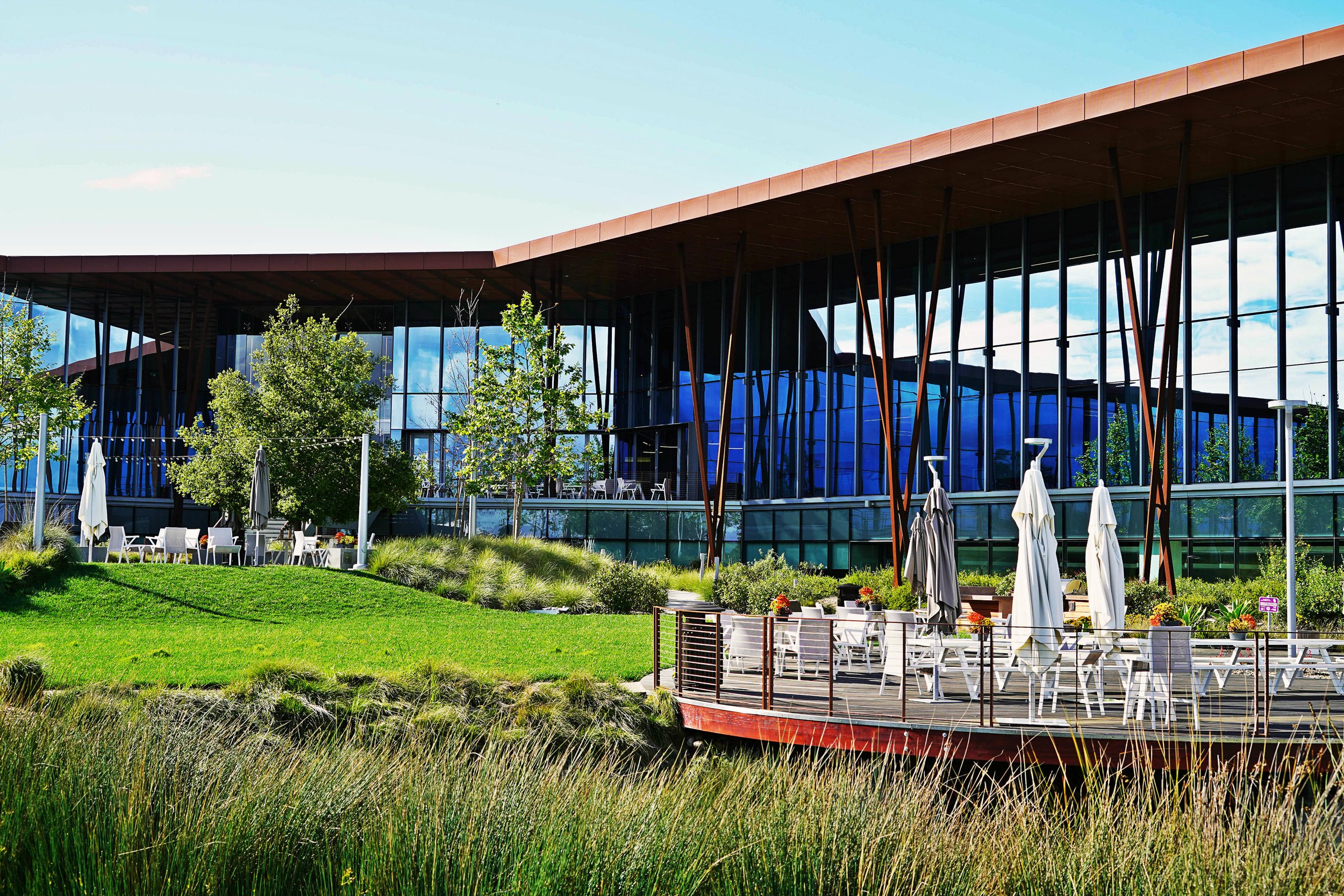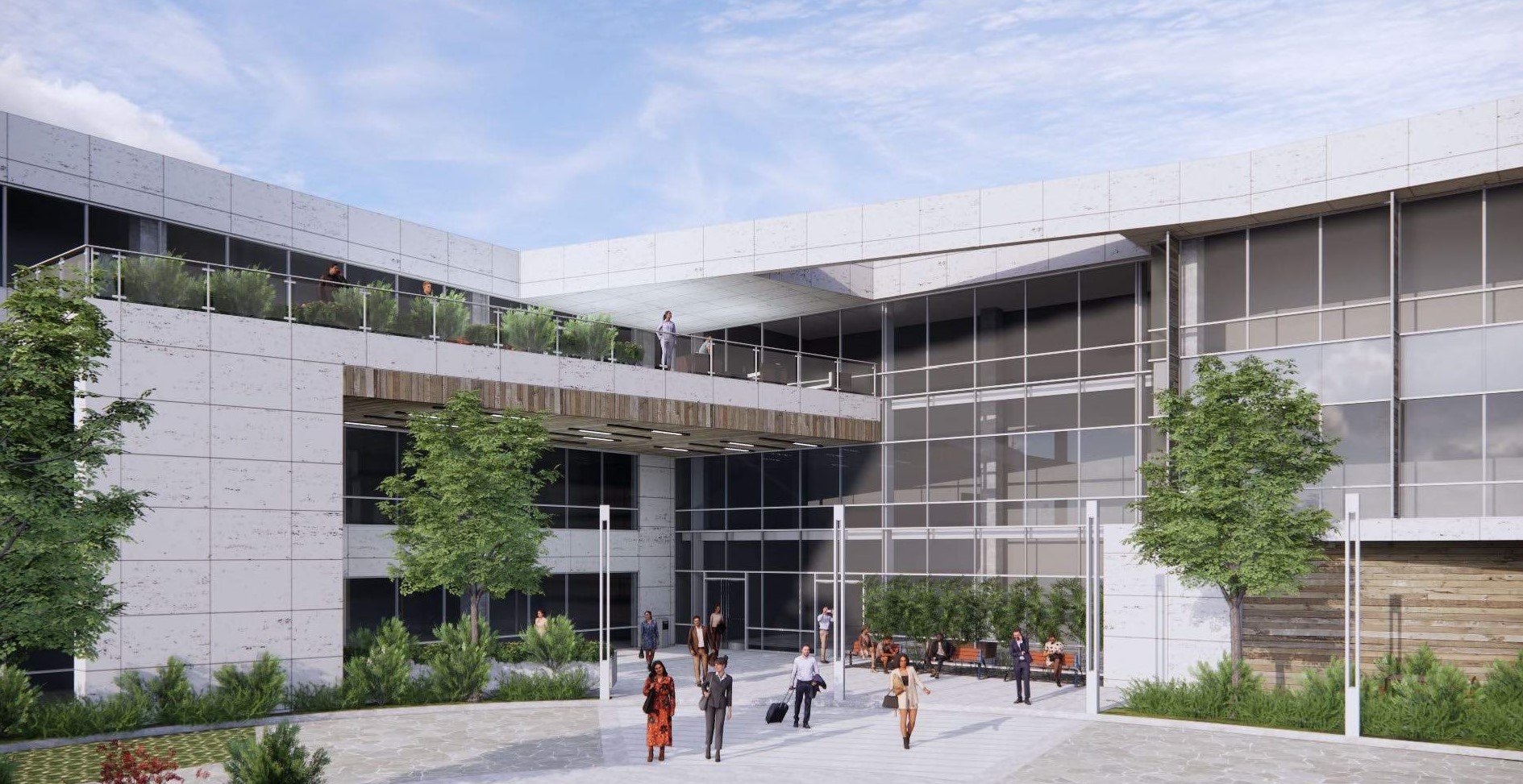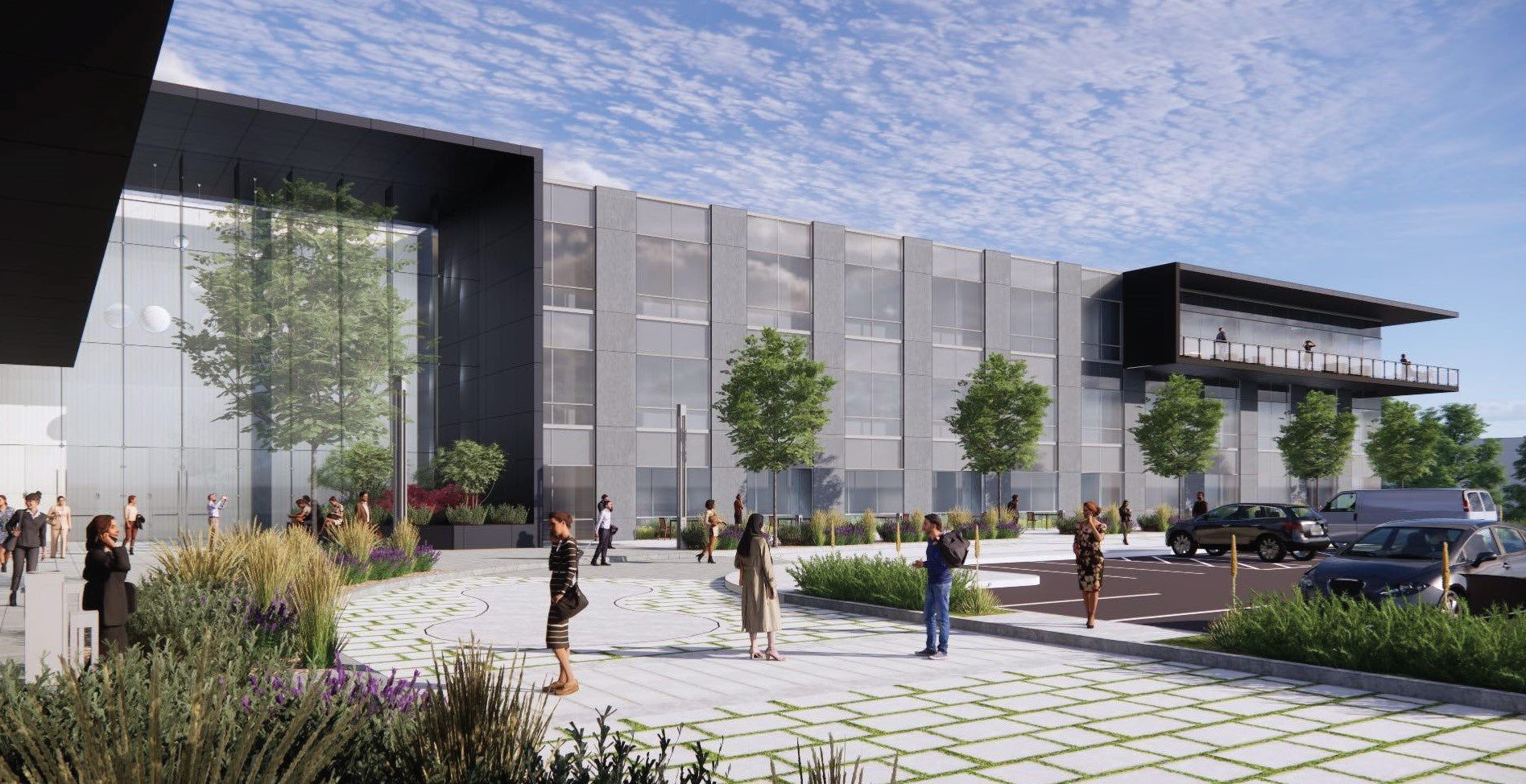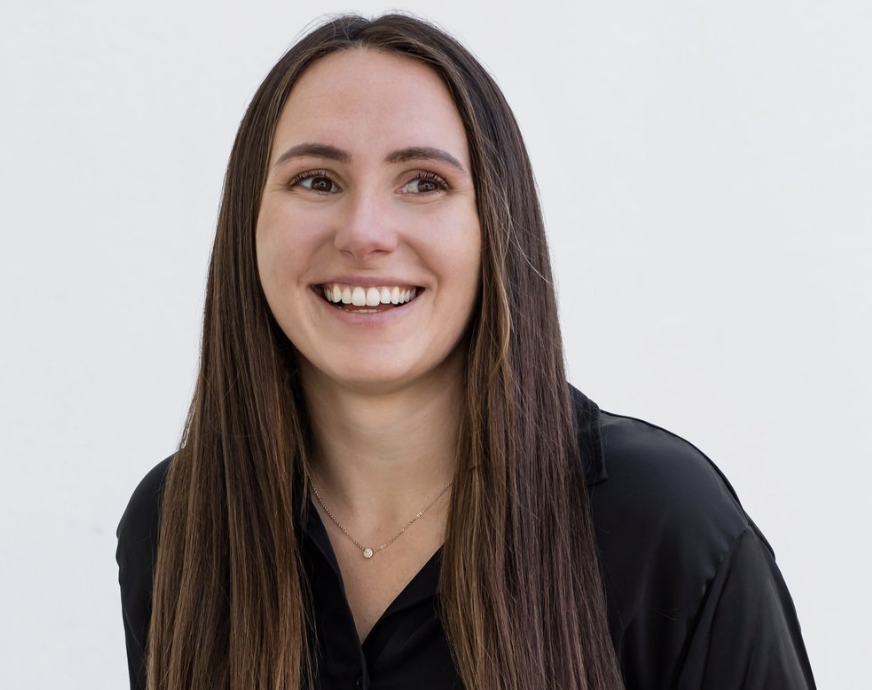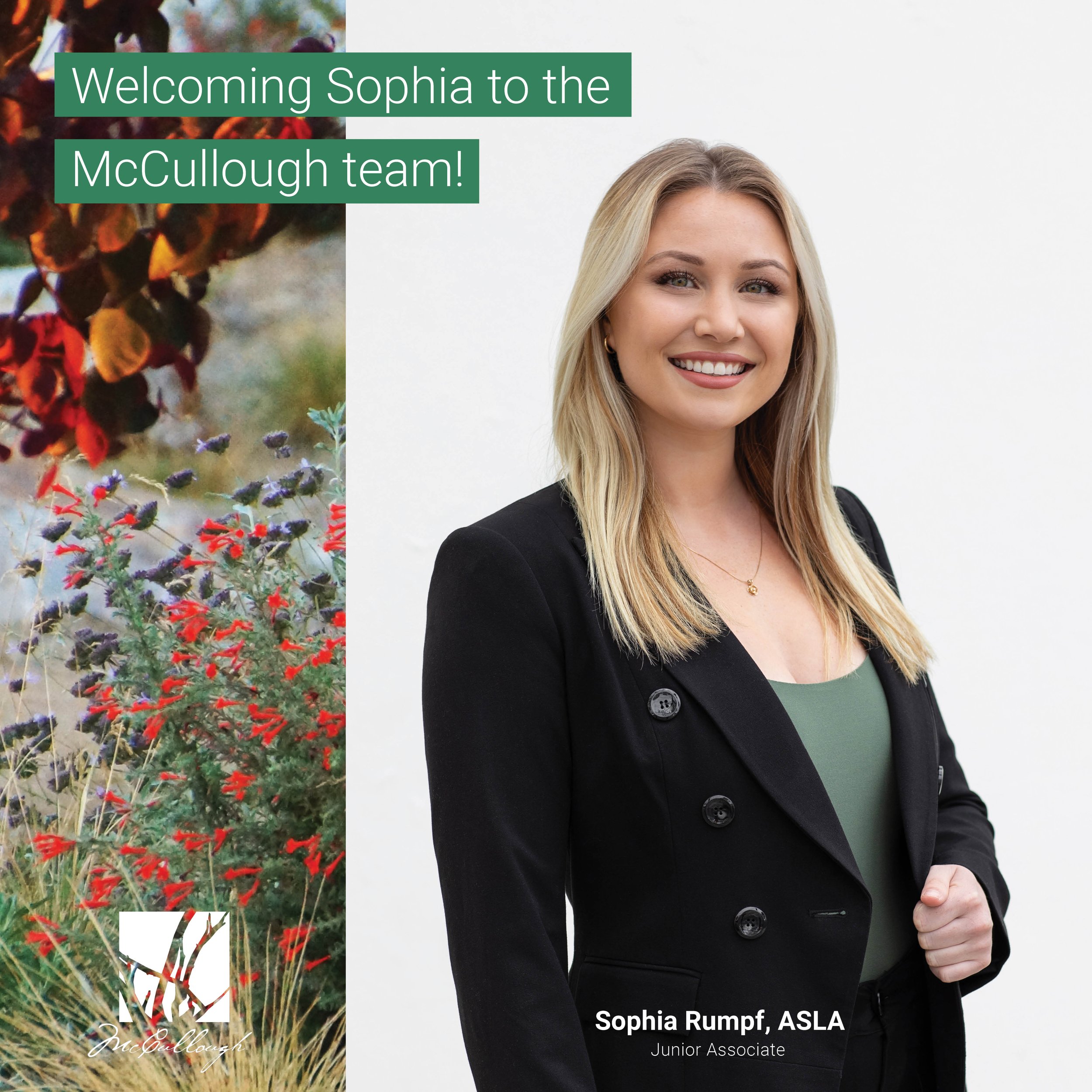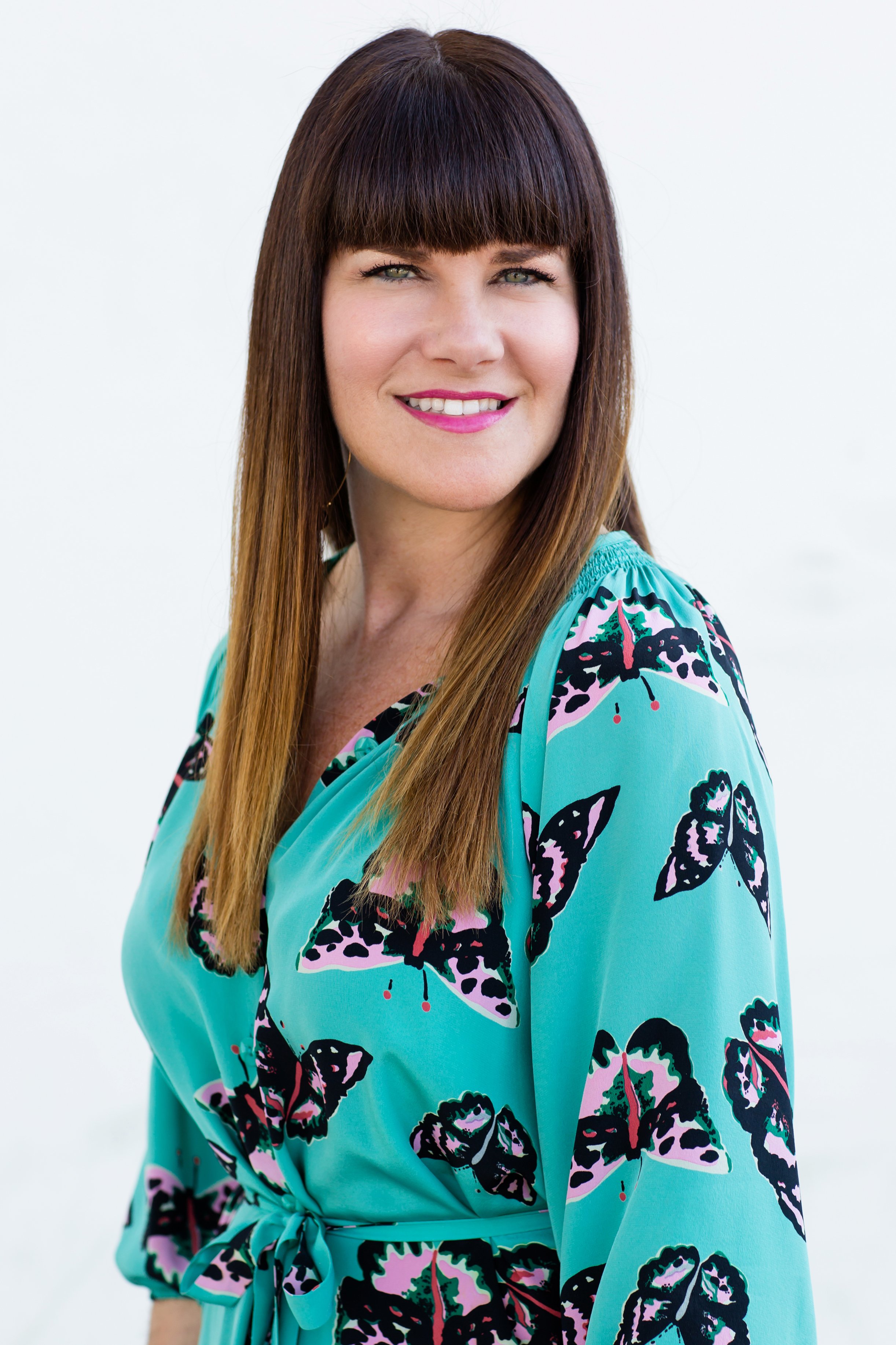WATER-SMART LANDSCAPE
When someone hears that California is entering a drought, the news gets less shocking each time. The hard truth is that California’s climate is changing so rapidly that seasons without much rainfall have become ordinary. California’s current drought continues into another year, making water more of a focal point for sustainability. Global warming and a changing climate urge more permanent changes to utilize water more efficiently. This probes a critical question — can you have landscapes that look lush and colorful but still use less water?
NOT AN IMPOSSIBLE DREAM
There is a great deal to unpack when it comes to the myths about what a water-wise garden or landscape looks like in California, and a major underlying misconception is that drought-tolerant landscapes will look “dry, brown, lifeless, or desert-like.”
“Lush is an effect, not a plant type. Lush does not require water.”
—Hot Color, Dry Garden, by Nan Sterman
LOW WATER, HIGH STYLE
The design approach is rooted in a deeper understanding of the plants and their dynamics. Local, native plants have also adapted themselves to California’s soil and climate, making them increasingly tolerant of the area. We have sadly driven out some native varieties with non-native, invasive plants. It’s time to rethink how we can invite them back. As an artist who loves to paint, I see the plant combinations with different shades of green with a pop of purple, white, yellow, red, and blue balance the harmony of the palette.
California sages thrive from coast to inland, blooming in the spring, with the majority happy to be in full sun. In addition, diversity in plants helps generate a native pollinating setting for butterflies, hummingbirds, and bees. Achillea — a native perennial herb — is one beauty that surely catches your eye when it enlivens in the summer with color nestled into a meadow of grasses.
California natives with colors ranging from all shades of green to red, purple, yellow, and orange weave around boulders at La Jolla Village Professional Center.
Foliage character, structure, and texture can give us a direct understanding of water conservation. From spirals to rosettes, the structure of a plant always complements the plant palette when rightly placed. Partnering plants based on their texture and structure mimic a natural landscape in a designed setting.
Notice how the green background enhances the bold and colorful foliage structure of aloe, creating a dramatic contrast in La Jolla Cove.
EVERY LANDSCAPE HAS A PURPOSE; LISTEN TO THE DIALOGUE OF ITS SOUL
There are many species of California native plants to choose from that fit our region well. Many people pick up the native plants they like from the local nursery and treat them like any other plant. It’s often easy to forget that these are California natives we are dealing with. So, when the warmer months come in and there isn’t a lot of precipitation, it’s important not to overwater. Natives require a little additional water until they establish, while overwatering in summer fosters soil pathogens on the root ball and kills the plant.
Knowing if your plant is a deciduous variety that will go dormant in the winter is also important. When they begin to go deciduous or even semi-deciduous, the plant is not necessarily dying, so it’s unnecessary to add more water. They will come back when it begins to warm up again. However, a few design principles ensure that the outdoor landscape creates a year-round appeal. Grouping companion plants, layering, massing, and breaking up the monotony with bold colors, sculptural textures, and height can create an exciting view. So, if you have chosen any deciduous or semi-deciduous plants for your landscape, mix them with evergreens to retain the color during winter.
The arrangement of plants with tall Miscanthus grass in the background with grayish-green salvia and broadleaf Furcraea in the foreground balances the height. Grasses and grass-like plants bring movement into the landscape in San Diego State University, Olmeca Hall.
THE GRIT: ADAPTING TO SEASONAL CHANGE
One myth that has made its way around California is that we should plant our plants in the fall after the summer heat has worn off. This fear stems from the idea that plants planted in the winter or summer would be too weak to make it through the entire season, and planting in the fall was best for the plants to become established by spring. The reality is that California’s climate is mild enough to plant at almost any time of the year. Las Pilitas Nursery writes, “Early fall can be a problem in areas where the pressure from deer and rabbits and other critters is at its highest point, and then when the end of the dry season is near, the animals have run out of food, and your newly planted, juicy plants look tasty!”
CREATING A MICROCLIMATE
Microclimates in landscapes can be naturally occurring or intentionally designed depending on the site. For example, topography can redirect water flow efficiently and influence runoff and temperature. With more than one microclimate, plant material should be thoughtfully selected and grouped for the type of soil, sun, and shade requirements.
Grouping plants with similar sun exposure (full sun, part shade/sun, full shade) and water use (hydrozone) creates microclimates in the Water Smart Demonstration Garden at the Helix Water District Administrative Office, La Mesa.
Exposed soils can have raised soil temperature in extreme weather, leading to quick evaporation and affecting the survival of the plants. Canopies of trees and groundcover plants like sedums within taller shrubs, gravel, and mulch reduce evapotranspiration considerably and provide a shaded alternative for outdoor activity.
Fillers and groundcovers along with trees help reduce evapotranspiration at Takeda Pharmaceuticals in San Diego
At Invivogen, an overhead shade structure provides seating space along with shade-tolerant and moisture-loving plants.
An important thing to remember is that you also don’t want to combine plants that hold a drastic difference in water needs. One of the key resources for selecting plants is the WUCOLS database, which lists plants for the region based on the plants’ watering needs. This database can help determine which plants’ needs complement the ones you already have or are proposing for the site.
“Water for landscaping makes up about 70 to 80 percent of urban water use in Southern California. If we shift toward plants and landscapes that are more appropriate toward the California climate, we could dramatically reduce our water use.”
—Heather Cooley, Director of Research at the Pacific Institute, Water Think Tank
FUNCTIONAL WETLANDS
What do you envision when you read the following? “Tall grasses like Miscanthus and Calamagrostis combined with Achilleas, Carex, Fescues, Bouteloua, Salvia, Nepeta, and others.” It’s a bioswale! Why can’t bioswales be incorporated as an integral part of landscape design?
Bioswales don’t have to be a hidden, neglected part of the site or along parking islands or median strips. The organic flow of the swale creates an opportunity to design a bio-habitat with the plant material that survives different levels of runoff water. In addition, berms around the swales can help increase the holding capacity and provide good drainage.
A cantilevered, functional outdoor lounge area overlooks at Vertex, San Diego, while berms and swales of grasses direct the flow of water for stormwater maintenance.
RETHINKING TURF
It is difficult to have an open lawn area in California and maintain its health throughout a drought. What makes it more difficult is that some cities have even placed ordinances that ban artificial turf but still expect you to maintain the grass area if you have one. Minimizing turf, replacing them with native grasses or low-water groundcovers, and finding different ways of providing a functional space embracing the beauty of large campuses strike a balance between how the space is utilized and further navigate the ongoing drought.
This synthetic lawn at Cue High-Tech Facility, San Diego, offers a range of uses, including lounging, playing, socializing, and more. With an artificial turf like this, you can maximize on the various opportunities the space has to offer.
IRRIGATION
The Metropolitan Water District of Southern California has declared a water shortage emergency, cutting outdoor watering to one day a week.
“Metropolitan has never before employed this type of restriction on outdoor water use. But we are facing unprecedented reductions in our Northern California supplies, and we have to respond with unprecedented measures. We’re adapting to climate change in real time,”
—Adel Hagekhalil, Metropolitan Water District General Manager
Balancing soil moisture sensors, using gray water, and integrating with the efficient automatic irrigation system are ways to act sustainably and effectively reduce water use. Manually irrigated systems should be monitored and adjusted to avoid overwatering. Surface runoffs can be avoided by decreasing the overspray into the hardscape. Using recycled gray water to irrigate landscapes will reduce the cost of potable water.
In California, gray water is defined as:
“…untreated wastewater that has not been contaminated by any toilet discharge, has not been affected by infectious, contaminated, or unhealthy bodily wastes, and does not present a threat from contamination by unhealthful processing, manufacturing, or operating wastes. Gray water includes, but is not limited to, wastewater from bathtubs, showers, bathroom washbasins, washing machines, and laundry tubs, but does not include wastewater from kitchen sinks or dishwashers.”
—California Department of Housing and Community Development
INNOVATIVE WATER USE REDUCTION
“…department of water resources implement, at a minimum, the shortage response actions adopted under section 10632 of the water code for a shortage level of up to twenty percent (level 2), by a date to be set by the water board.”
For landscape designers, the loss of water is the accelerating point to shift the way of thinking. Recycling wastewater accumulated in the building (for example, condensation from large air-handling units/coolants and rooftop runoff) all have a constant water flow. Irrigation of the recycled water reduces the use of potable water during hot seasons as well as pressure on the stormwater systems, which is normally lost as wastewater.
275,500 gallons — that’s the amount of condensate water estimated to be collected annually for campus reuse. Mesa College Commons is the first building of all the San Diego County community college properties to house a group of six 1,700-gallon cisterns that provide 100 percent of the site’s irrigation needs (up to 98,000 gallons) through reclaimed HVAC condensate water and collected rainwater.
MOVING FORWARD
With many urban infill-type projects quickly underway throughout California, there is an added layer of adaptability. Therefore, the design of these new buildings is constantly evolving methods to help integrate them into the immediate community. Some choose to stand out; some decide to blend in. Whatever the design of the building, the landscape must reflect it — or juxtapose with it — depending on the design intent. It is our duty as the designer to influence positive change. The more we implement drought-tolerant and California-native plant species, the more significant the impact we can have in reducing water consumption. Working with what California has to offer us, we can not only fight the drought but create landscapes that will thrive and remind us of how lucky we are to live here.
Lastly, don’t miss the Urban Land Institute’s new webinar on this very subject on July 13, Water Wise: Strategies for Drought-Resilient Development.
Mahalakshmi Balachandran, Int’l ASLA
Senior Associate
Adam Crowell, ASLA
Junior Associate
Client of the Month:
Ware Malcomb
We are pleased to announce our June Client of the Month, Ware Malcomb, an award-winning international design firm that prides themselves on “not being like everyone else.”
Ware Malcomb is celebrating its 50th year in business this year, beginning their journey on April 1, 1972, and growing to 900 people across the globe since then. From the Americas to São Paulo, Brazil, to Toronto, Canada, the firm covers multiple disciplines, including architecture, interiors, civil engineering, and branding - touching every product type that’s out there. Specifically in San Diego, Ware Malcomb is very active in the life sciences market, with both ground-up and tenant improvement projects, as well as integrating themselves into the industrial, medical office, and multi-family markets.
This month, Ware Malcomb was ranked the number two firm in San Diego by the San Diego Business Journal and has had extreme growth in the past year, reaching 70 employees and exploding alongside the e-commerce and industrial industries
We sat down with Brian M. Koshley, AIA, Regional Director of San Diego, who oversees the San Diego Sorrento Valley and Downtown San Diego offices. Brian describes the team as being very enthusiastic about where the region is at and what the future holds. “We are excited about building an unstoppable culture,” says Brian.
What does culture mean to Ware Malcomb?
Culture might mean something different to every company. For Ware Malcomb, their mindset is, “We are only as good as all of our colleagues.” Brian strives very hard to make sure the culture allows all employees to be engaged in all aspects of their career.
“Of all the places I have worked, we have the strongest platform for career growth. I can sit down with a colleague and map out for them what the next 12, 24, or 60 months could look like for them in their career. We help them create a vision for where they want to go.” —Brian Koshley, Regional Director
Ware Malcomb has made a concerted effort to create a unique culture, given how exceptional the market is for both business opportunity and employment. Another factor that makes up their culture is the level of diversity of their people and their practice, as far as product type and geography. As the regional leader, Brian Koshley is outward facing, connecting with clients, and inward facing as a part of the leadership team. He says, “Anyone who stays in the profession long enough most likely ends up running a business. I’m blessed to be able to do both.” As a licensed architect, he can empathize with what others are struggling with but can also step into the gap and answer technical questions, create site plans, pitch ideas, and run a business and have an impact.
As a region, the team epitomizes the diversity the firm is trying to achieve, not only in project type or geography but also in their diversity, equity, and inclusion (DEI) program initiatives. Ware Malcomb launched the Ware Malcomb DEI Program in 2022, with a commitment to institute purposeful change.
A vast majority of the leaders in San Diego are women. In architecture, that has always been a struggle. A core value for Ware Malcomb includes providing opportunities for all team members to grow their careers and have a voice. Three leaders were recently listed in the San Diego Business Journal as Women of Influence: Christina Mannion, Studio Manager, Architecture; Kara Mathies, Studio Manager, Interior Architecture & Design; and Angela Ryan, Director, Interior Architecture & Design — all located in the San Diego region.
Ware Malcomb first hires for fit not only to mesh with the culture but also to help improve the culture, and skill comes second. The open culture promotes diversity, which ultimately cultivates innovation and creativity. Koshley explains that diversity comes naturally.
McCullough and Ware Malcomb Collaboration
Brian Koshley and McCullough have a history of working together on several different projects. In a previous life, he worked at AVRP Studios, the neighboring office to McCullough.
“I was incredibly impressed with McCullough. They provided a very creative, refreshing approach to the landscape environment; whenever we had David on the team, we knew there would be a level of sensitivity and a level of broader thinking we might not necessarily expect from a typical landscape architecture firm.”
Once Koshley joined Ware Malcomb, the relationship continued. The challenge became working with different product types than what we have typically been used to. Instead of joining forces on a boutique multi-family project in Bankers Hill, we are now collaborating on a 50-acre industrial site, focusing on indigenous landscape for stormwater retention.
A classic example of this is a biotech project we are currently working on in San Diego. Ware Malcomb was approached by a client who had a large building, wanting to demolish it and build a larger development oriented toward life sciences. The site is large, with not a lot of buildable area, but with a vast area of protected habitat.
“The minute the project came to us, I knew I had the perfect fit for this,” says Brian.
McCullough was brought on as the landscape architect to bring thoughtful landscape to some great outdoor amenity spaces. The goal is to create a rich landscape experience and have that fold seamlessly into the natural typography and the protected species that are there.
We are also working on additional industrial projects with Ware Malcomb, the first being an existing three-story office building designed in the late 80s to early 90s. A client of Ware Malcomb is scraping the site to build a 100,000-square-foot industrial distribution. This is another example of how the market is changing and is indicative of how ecommerce is driving industrial distribution. The site is essentially more valuable to industrial industries than it is for an office space.
Additionally, we are working on a large industrial solution project in Oceanside, California. This site has been vacant for a long time. Given the proximity of the site to an airport, the glide slope has an impact on the height of the building as well as what type of species can be planted where. For example, it is important to stray away from plant species that would draw birds closer to the site, which could be startled by an aircraft taking off and then end up with a bird strike. A lot of aspects come into play that you might not normally think about or consider when designing for these unique sites.
We are grateful for the opportunity to continue to work with Brian Koshley and the team at Ware Malcomb on projects that expand our practice and expertise. We greatly appreciate their dedication to diversity not only to the built environment but also, most importantly, to our shared community. We are excited to see what the future holds for Ware Malcomb and our continued partnership.
Melanie Loria
Marketing & Business Development Manager
Welcome Sophia Rumpf!
McCullough Landscape Architecture has announced that Sophia Rumpf, ASLA, is its newest junior associate. Hiring expertise to meet demand, Sophia is the fourth new hire that the expanding landscape architecture firm has announced this year. She joins the award-winning McCullough team of highly skilled designers and professionals bringing sustainability, creativity, and an eco-conscious mindset to each and every project throughout California and the Western U.S.
From an early age, Sophia showed an appreciation for the natural and built environment. As she grew and learned more about the pressing ecological challenges of the 21st century, she became inspired to pursue a career where she could use design to improve people’s well-being and benefit the planet as well. Sophia earned her bachelor’s degree in landscape architecture from Cal Poly San Luis Obispo, with an emphasis on sustainable environments. She also completed an internship with Burdge Architects while earning her degree. Over the past few years, she gained industry experience as a project designer with Urban Arena and as a freelance landscape designer with Rivetti Landscapes.
Catherine McCullough, CPSM, President & CEO of McCullough, states,
“We’ve been very impressed by Sophia’s enthusiasm, positive attitude, and design sensibilities. She’s a great fit for our team and shares our firm’s core values — particularly an interest in how the human spirit engages with the natural world. We can’t wait to watch her spread her wings at McCullough and be a part of her growth as a designer at this point in her career.”
Catherine Named SMPS Fellow
We are very excited to announce our President/CEO/CMO, Catherine McCullough, FSMPS, CPSM, has recently been honored by the Society for Marketing Professionals (SMPS) as Fellow of the Society. SMPS Fellows represent the highest level of experience and leadership in marketing and business development within the design and building industry.
Join us in congratulating Catherine on this well-deserved honor! Catherine brings passion to her work and dedication to leadership that does not go unnoticed in the industry. Individuals who are recognized as Fellows are part of a specially selected group of achievers. This year, she is celebrating the 23-year anniversary of McCullough, where she has built the marketing and business development strategy from the ground up and established a team of passionate creatives. McCullough has become the go-to landscape architect for many clients and only continues to grow.
Catherine has also been in leadership roles for several professional organizations in the San Diego area. She is a past president for the San Diego Chapter of SMPS as well as a former Board Member for SMPS Society nationally, where she holds a certification as a Certified Professional Services Marketer (CPSM), in addition to serving on the SMPS Pacific Regional Conference Board of Directors. She is also currently serving as Director of Marketing & Communications for the San Diego Chapter of Commercial Real Estate Women (CREW) and participates in the Women’s Leadership Initiative Committee for the San Diego–Tijuana Urban Land Institute (ULI) Chapter. Catherine was just recently listed in the 2022 Top 50 Women of Influence in Architecture & Design by the San Diego Business Journal last month.
We couldn’t be prouder of Catherine for this huge accomplishment, and we look forward to seeing her leadership and experience evolve even more. Catherine will serve as a resource at the chapter, regional, and society levels to provide insight, ideas, programs, and mentoring. She will also be honored during Amplify A|E|C, the SMPS annual conference, this July in Atlanta.
Congratulations to the entire 2022 Class of Fellows!

